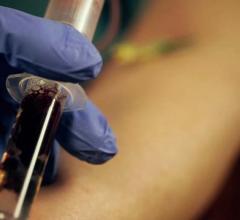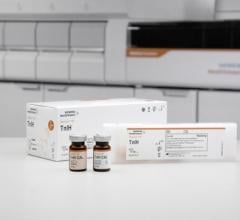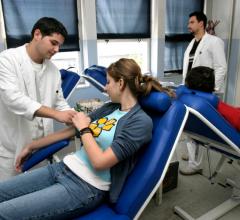
August 6, 2018 — A new test to assess a whether or not someone is having a heart attack upon arriving in the emergency room was safe and effective, according to new research in the American Heart Association’s journal Circulation. The test ruled out heart attack in emergency room patients faster than a conventional method.
The new high-sensitivity blood test for cardiac troponin, given in a hospital emergency room, was also found to be safe and effective. When patients present to emergency rooms with heart attack symptoms, doctors assess them in part by using a cardiac troponin test to measure a protein released into the blood when the heart is damaged.
“We did not miss any heart attacks using this test in this population,” said lead author Rebecca Vigen, M.D., M.S.C.S., a cardiologist at the University of Texas Southwestern Medical Center. “The test also allowed us to determine faster that many patients who had symptoms of a heart attack were not having a heart attack than if we had relied on the traditional test.”
Recently the U.S. Food and Drug Administration (FDA) approved a high-sensitivity troponin test already used in Europe. The researchers developed a procedure for assessing the results of the new test and compared it to existing practice using a conventional troponin test, which takes three hours to complete. Study participants were 536 patients admitted to an emergency room with heart attack symptoms, including chest pains and shortness of breath.
The new procedure successfully “ruled out” 30 percent of patients immediately and an additional 25 percent at one hour. By three hours, the new procedure ruled out heart attack in 83.8 percent of patients compared with 80.4 percent using the conventional test.
“We anticipate that this procedure will allow many patients with chest pain to be given a ‘yes’ or ‘no’ diagnosis of whether they are having a heart attack faster,” said Vigen, who hopes clinicians from other institutions will learn from these results.
Co-authors are Patricia Kuscher, M.T., A.S.C.P.; Fernabelle Fernandez, M.L.S., A.S.C.P.; Amy Yu, M.L.S., A.S.C.P.; Bryan Bertulfo, M.L.S., A.S.C.P.; Ibrahim Hashim, M.Sc; Kyle Molberg, M.D.; Deborah Diercks, M.D., M.P.H.; Jeffery Metzger, M.D., M.B.A.; Jose Soto, M.D.; Dergham Alzubaidy, M.D.; Lorie Thibodeaux, M.H.A.; Jose Joglar, M.D.; James de Lemos, M.D.; and Sandeep Das, M.D., M.P.H. Author disclosures are on the manuscript.
The National Center for Advancing Translational Sciences of the National Institutes of Health funded the study.
For more information: www.ahajournals.org/journal/circ
Reference
Vigen R., Kutscher P., Fernandez F., et al. "Evaluation of a Novel Rule-Out Myocardial Infarction Protocol Incorporating High-Sensitivity Troponin T in a US Hospital." Circulation, Aug. 6, 2018. https://doi.org/10.1161/CIRCULATIONAHA.118.033861
Related Troponin Content
VIDEO: Use of High Sensitivity Troponin Testing in the Emergency Department
Singulex cTnl Assay Can Identify Presence, Severity of CAD in Stable, Symptomatic Outpatients


 October 09, 2019
October 09, 2019 








